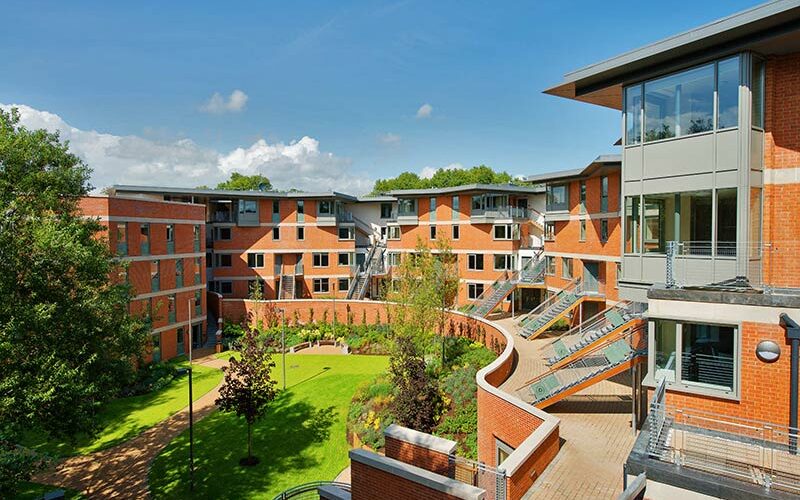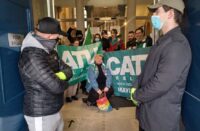In 2019 there were 37,859 applicants on the social housing list in the north of Ireland. 26,387 of those were deemed to be in priority need of housing, described as housing stress; 74 per cent of those were considered officially homeless.
These grim statistics are compounded by the fact that at present there are about 19,000 vacant premises in the North, with Belfast having the highest number, 3,213—maybe not enough to solve the housing crisis but surely enough to make use of and put some sort of dint in it.
So why aren’t these properties used, and how are we dealing with the housing crisis? Why does it even exist?
As is characteristic of capitalism, basic human needs are viewed as a source of profit, housing being no exception. In 1971 the Housing Executive was set up, taking the power of allocation away from local authorities to help deal with sectarian discrimination in housing. For a while it was considered an international leader in public housing; in recent times it is far from that.
At the beginning of 2019, 3,943 homeless people had been on the priority housing list for more than five years. The Housing Executive is required to provide temporary housing to homeless applicants until permanent housing is available. The temporary housing that is provided is substandard, and people are forced to live there for far too long. In 2017–18 the average stay in temporary accommodation was 282 days, and in 2018 the average waiting time to be offered social housing was just over a year. However, the Housing Executive confirmed that some people have been on the list for several decades. In 2019 more than two hundred people died while on the homeless register.
There is at present a huge shortage of social housing. In 2017 only 7,680 households were allocated a social home, the highest number of those being 958 in the North Belfast constituency. To help deal with this shortage the Department of Communities vowed to give priority to the supply of new social homes in their budget of £144 million. This should have increased the number of homes by 1,850 in 2019. However, by July 2019 the number of households in priority need was the highest on record. Despite this new record, between 2018 and 2019 fewer than a thousand new houses were built by the Housing Executive. At this rate it would take more than a decade to house even those considered homeless.
Adding to the housing shortage is the “right to buy” scheme. Introduced in 1979, this provides tenants and housing associations with the right to buy council houses at a discount. This allows investors to buy up council houses through deferred transaction agreements. In 2018–19 the Housing Executive sold 449 houses, and by March 2019 more than 123,600 had been removed from the social housing stock since the scheme began.
In 2013 a survey showed that a third of “right to buy” houses were now owned by private landlords; so it is no surprise that in June 2020 Sinn Féin, the DUP and the Alliance Party blocked an amendment that would abolish the “right to buy” scheme.
Although it is obvious that not enough use is being made of existing vacant properties, and that the buying up of social housing is even further worsening the housing crisis, the importance of building new houses should also be kept in mind.
The chief executive of the Simon Community (NI), Jim Dennison, pointed out that “we must not fall into the belief that the buildings needed to end homelessness already exist.” Prof. Stewart Smyth echoed the importance of new housing in a recent lecture in which he talked about the past, present and future of the Housing Executive. A researcher, trade unionist and activist who has carried out extensive research into the housing crisis for the Northern Ireland Public Service Alliance, Prof. Smith argues that the building of new houses under a fully funded housing executive would be essential for providing secure and decent homes as well as generating jobs.
While the building of new housing would be ideal, it is very hard to do so without the support of the government. Many people argue that if Stormont was operating, the crisis would somehow be dealt with. This is obviously a nonsensical idea when you consider that the housing crisis existed long before Stormont collapsed.
A clear example of Stormont’s incompetence in dealing with the needs of the working class can be found in its decision to drop a plan for social housing on the site of Mackie’s textile factory in West Belfast—one of the highest areas of need, with five homelessness hostels within a few miles of the site itself. Instead there is now a plan for private developments on the site adjacent to Mackie’s.
We also face a unique situation in the North, where we still, to an extent, live in a segregated society. Many nationalists won’t or simply can’t live in predominantly unionist areas, and vice versa. So up crops the problem of “Where do we build houses, and who will live there?”
The Girdwood housing plan provides an example of this problem. This was a plan to build sixty houses on the site of a former British army barracks. It had been delayed for years because of disagreements over the housing allocation between nationalists and unionists. This disagreement in itself ignores the fact that housing is not only required by the nationalist and unionist communities but also by immigrants and refugees; so where do they fit in? The plan was then to create two separate blocks of housing, even though 95 per cent of newly built housing in North Belfast was needed by Catholics.
Another question now arises: What have people been doing to combat the housing crisis?
In Belfast the housing struggle has centred on a small number of political activists. In the autumn of 2018, ACORN [the Association of Community Organisations for Reform Now] South Belfast was launched. The group was made up largely of student activists, with People Before Profit being heavily involved. A number of quick victories against letting agents’ fees were won, with many agencies conceding to demands with just the threat of a picket on their premises. These victories resulted, for a short while at least, in eleven agencies no longer charging illegal letting fees.
While there is a large student rental sector in the area, the careerism that is endemic among student activists led to the demise of the movement. All operations of the tenants’ union ceased once a council election was called and the organiser (a member of People Before Profit) stood for election in the area—once again showing how electoral politics smothers rather than emboldens working-class movements and power.
Several months later, in the summer of 2019, the socialist republican group Lasair Dhearg consulted members of the CYM, the IRSP and Saoradh about forming a tenants’ union and pressure group in West Belfast. The group was structured horizontally to avoid what was dubbed “bureaucracy” and “single-group control,” which inevitably left it with a lack of accountability and structure that was desperately needed after the experiences with ACORN. This group was successful in pressuring letting agencies in the area through threatening pickets to repeal illegal fees, and the group began to explore building the union itself.
The Beechmount and Mid-Falls areas of West Belfast were decided on as the targets for the summer, with door-to-door calling both to recruit and to get an idea of the housing issues in the area. This came and went, with little success. People in the areas were either long-term house-owners, didn’t know their landlords, or were content with their living situation. This raises the question of why this area was chosen. It was a result of the lack of structure and accountability that came with the group’s horizontal structure.
The group began to decline after Lasair Dhearg moved into new projects, and the housing struggle moved mainly into the Student Renters’ Group, a tenants’ union based in Queen’s University Students’ Union set up by a Lasair Dhearg member, Ciarán O’Brien, alongside CYM members and independent student activists.
The Student Renters’ Group has been effective in becoming a source of information for tenants, with on-line social groups used more effectively. Door-to-door calling was once again employed, but this time over a much longer period. There are at present more than four hundred members in the Student Renters Support Forum.
The covid-19 crisis has halted all activity as students returned to family homes. The Student Renters’ Group mainly dealt with advice and support for student tenants in gaining access to support funds and liaison with local representatives, such as Gerry Carroll, to propose protections for student renters, such as a rent holiday and being let out of leases early.
The Student Renters’ Group will continue in the new academic year, with talks continuing about building a branch of the Community Action Tenants’ Union (CATU) in Belfast.






